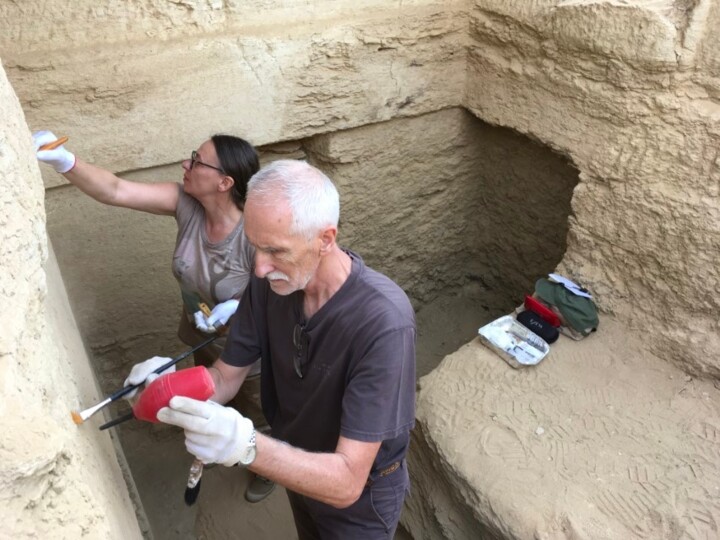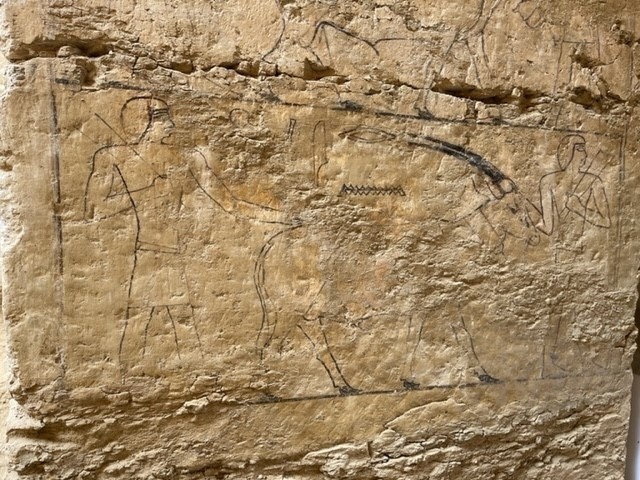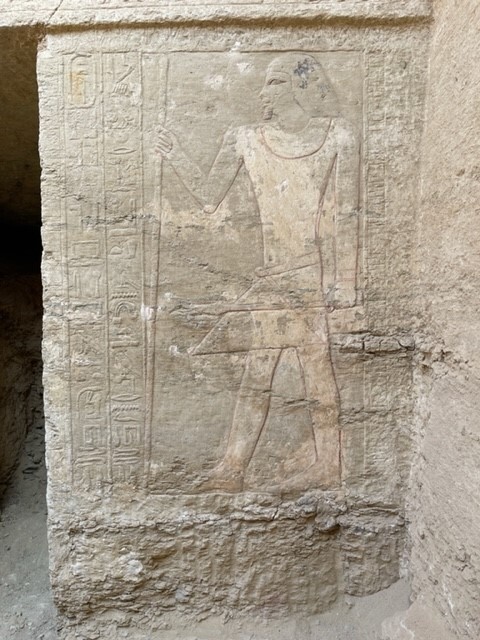 Credit: A. Kowalska/CAŚ UW
Credit: A. Kowalska/CAŚ UW
The team found the tomb while digging in a dry moat that surrounds the larger Step Pyramid of Djoser, which was built for the late pharaoh who ruled from about 2630 BCE to 11 BCE. This was an extension of an earlier dig. There, archaeologists found the tomb's entrance facade, which was decorated with hieroglyphic writing, rough paintings, and a relief of the tomb's owner.
"The dignitary's name was Mehtjetju, and he was, among other things, an official with access to royal sealed, or secret, documents, an inspector of the royal estate, and a priest of the mortuary cult of King Teti," expedition director Kamil O. Kuraszkiewicz said in the statement. "This means that he probably lived during the times of Teti, Userkare, and Pepy I, the first three rulers of the Sixth Dynasty" (ca. 2300 BCE). The reliefs would have been made by skilled craftsmen, which Mehtjetju would have been able to pay for because he was a more important person. The rock on which it is carved, on the other hand, is fragile and worn down, but conservators from the National Museum in Warsaw fixed it up.
 Credit: J. Dąbrowski/CAŚ UW
Credit: J. Dąbrowski/CAŚ UW
Without polychromy, the decoration on the front seems to be missing something. "It's possible that it was never made because the chapel wasn't finished being decorated. "There are no reliefs on the side walls of the entrance. Instead, there are figures painted in black ink on lime plaster," Kuraszkiewicz said. The sketches, which show animals like cows, antelopes, and goats that were used as sacrifices, would have been a rough draft for later, more detailed reliefs.
 Credit: J. Dąbrowski/CAŚ UW
Credit: J. Dąbrowski/CAŚ UW
Researchers think that the investor died too soon, so the decoration wasn't finished. This meant that the tomb was finished quickly, which was common in ancient Egypt. Since the burial chamber hasn't been looked into yet, no one knows for sure if Mehtjetju, his family, or maybe even other people are buried there. This fall, the archaeologists plan to look inside the chapel more.
This is the latest find in the necropolis of Saqqara. Earlier this year, five well-preserved, painted tombs from 4,000 years ago were found with more than 20 sarcophagi, toys, wooden boats, and masks.


 Jean Dubreil
Jean Dubreil